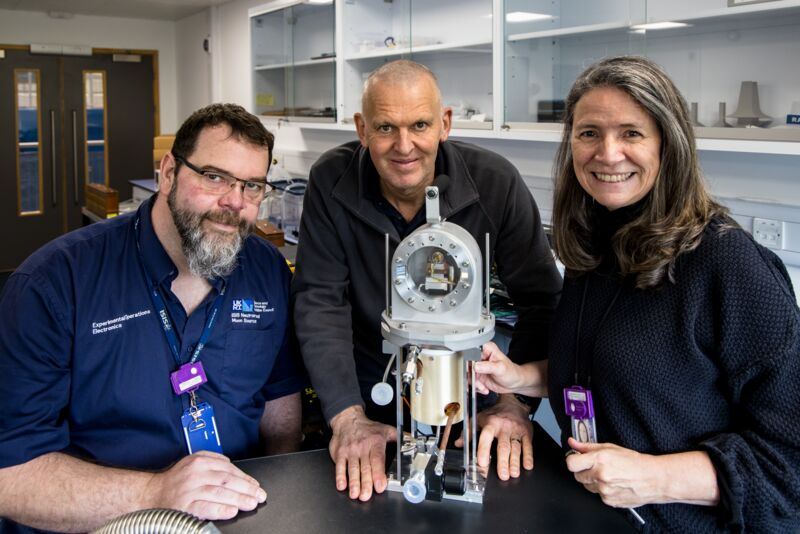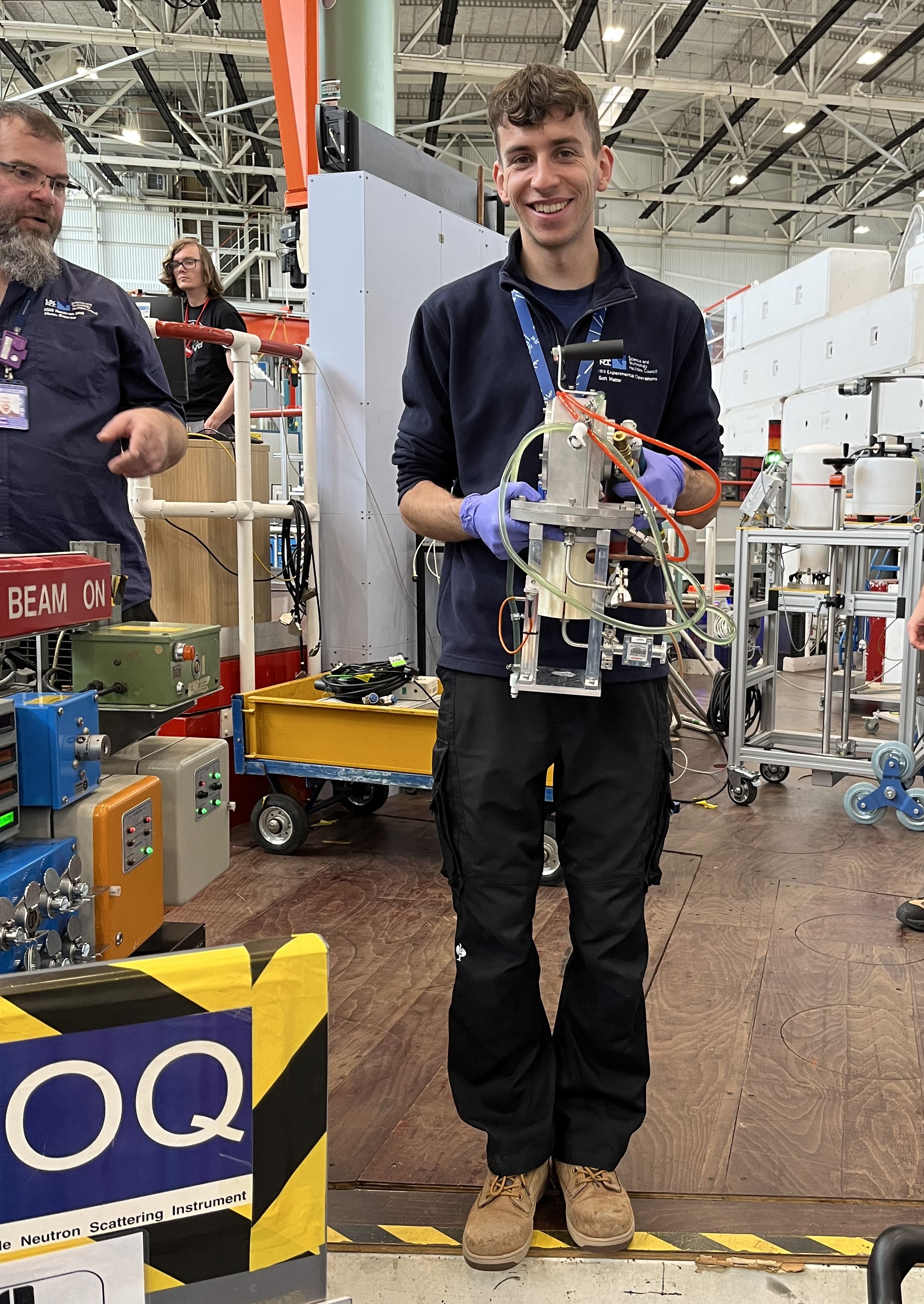Controlling the humidity of a sample requires a unique environment where the sample is kept separate to a water reservoir in the same system, and the temperature of the sample and water can be controlled independently. It's also important to try and isolate the sample and the water from temperature changes in the surroundings.
After previous experience with other humidity cells, for example at the ILL, ISIS scientist Rob Dalgliesh brought the idea of building the same type of sample cell at ISIS. However, the classical design of an aluminium cylinder just didn't quite work for ISIS time of flight instruments and so this is where the ISIS Sample Environment team got involved!
 Because of the complex requirements, the team decided that 3D-printing would be a good way to create the channels inside the hood structure that were needed for good thermal control and isolation, whilst being able to use a suitable alloy. Xiao Wang from the Instrument Design group designed a few different versions, until the final one was 3D-printed and machined before being assembled and tested by Keith Alum, from electronics, and Andy Church from Soft Matter Lab team.
Because of the complex requirements, the team decided that 3D-printing would be a good way to create the channels inside the hood structure that were needed for good thermal control and isolation, whilst being able to use a suitable alloy. Xiao Wang from the Instrument Design group designed a few different versions, until the final one was 3D-printed and machined before being assembled and tested by Keith Alum, from electronics, and Andy Church from Soft Matter Lab team.
Image, right (L to R): Keith Allam, Andy Church and Leide Cavalcanti with the new cell.
After a few iterations, the humidity cell was installed on IBEX by David Keymer from Experimental Control. Once the offline tests were satisfactory, it was ready for testing on the beamline. Leide Cavalcanti, SANS instrument scientist, commissioned the cell in July, using a clay sample to study how the humidity effected the structure.
The commissioning was a success, and the next stage is to produce multiple cells, so that the humidity can be set for multiple samples before being brought into the beamline. This will allow one sample to equilibrate offline while another sample sits in the beam. This was a real team effort, and the cell will also be useful for experiments on beamlines across ISIS, not just LOQ, mainly for SANS and Reflectometry experiments.


Image, above left: Leide with the cell on LOQ. Image, above right: James Dalton from the ISIS Soft Matter team carrying the humidity cell to LOQ.
